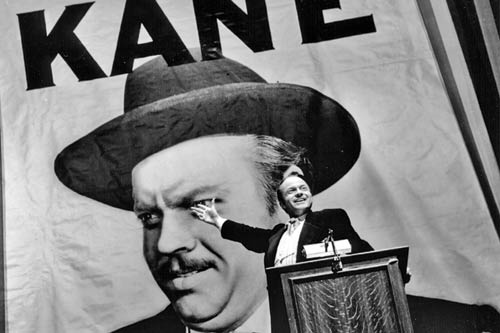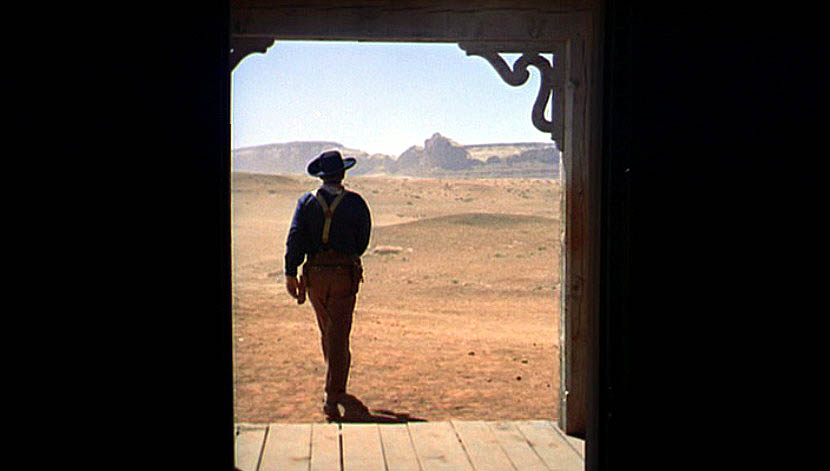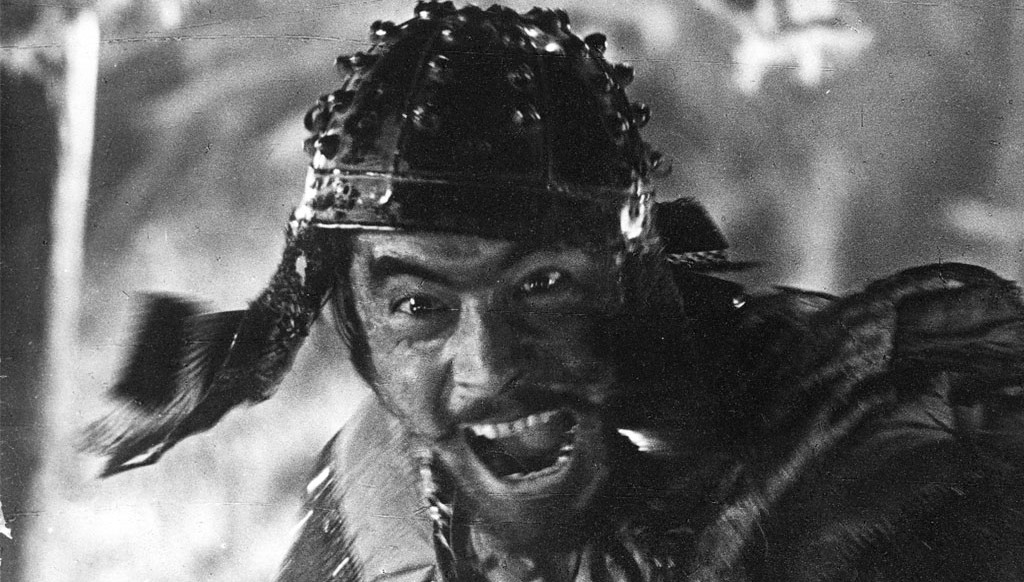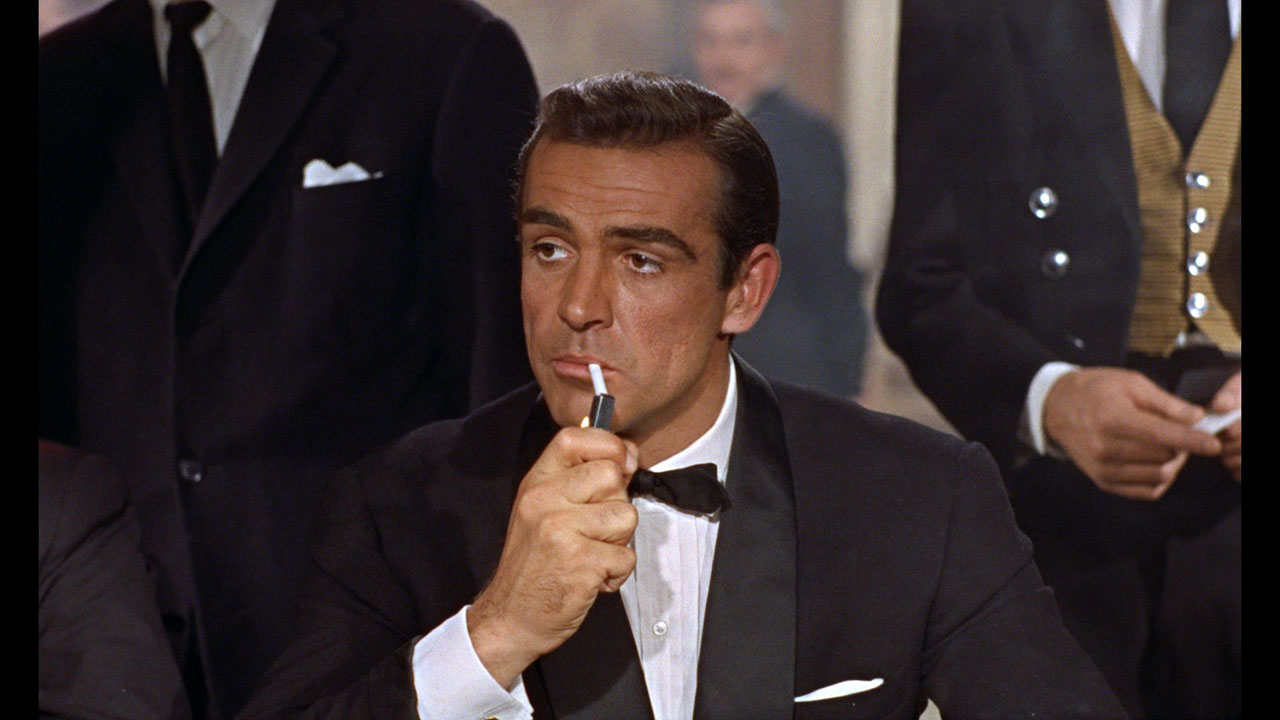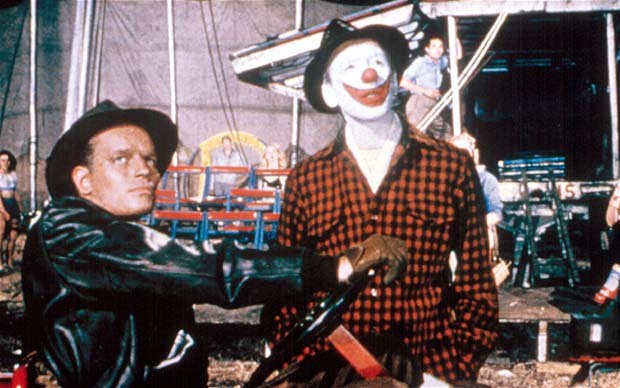6. Citizen Kane
This is a no-brainer considering Welles inspired the entire world of cinema with his audacious film that dared to use the medium to its full potential. Welles’ debut feature is daring in its use of cinematography, performances, and editing. There is no shot or line of dialogue that is not in service to the story. The story of Charles Foster Kane is almost a warning of the emptiness of the American dream.
What struck Spielberg so much about Kane and Welles, is the curouge and audacity of a filmmaker making a movie completely his own way. Welles, only 25 at the time, didn’t know what he couldn’t do. Using his theater experience to breathe new life into the medium. He gave not only Spielberg, but also countless filmmakers the courage to stick to their artistic vision.
7. The Searchers
Spielberg claims he tries to watch a John Ford film, particularly The Searchers before he begins a new screenplay. The brilliance of John Ford’s photography is how he used scenery to paint his picture. The snow comes down as John Wayne’s character’s heart freezes towards the natives who’ve kidnapped his niece. Ford’s wide open plain suggests the world is much larger than we first thought, and our hope to control it is pointless.
Spielberg’s love for The Searchers goes back as far to when he was just a kid making home movies using a Rio Grande sheet as a backdrop to recreate Ford’s landscapes. This love can be seen in the sweeping shots of landscapes and crowds in Close Encounters and the Indiana Jones films. There’s even a direct reference in The Color Purple using similar staging and photography to show characters standing on their porch looking out across the plains.
8. Seven Samurai
There are few people more influential on directing than Akira Kurosawa; very few have film schools named after them. What Ford did for lighting, Kurosawa conveyed in compositions. From a technical standpoint, the movie is a feast for the eyes. His use of blocking and camera movement, particularly in Seven Samurai is seen echoed strongly in Spielberg’s more action oriented films like Saving Private Ryan and Minority Report.
In Saving Private Ryan, the opening sequence of D-day is heightened by both Spielberg’s use of shocking violence and the way he used the elements to create a mood. You feel the cold and wet beach at Normandy in much the same way you feel the rain and the mud in Seven Samurai. The use of smoke to create foreboding in Spielberg’s 2005’s remake of War of the World’s is reminiscent of how Kurosawa uses it in Throne of Blood.
9. Dr. No
It’s common knowledge amongst Spielberg fans that Indiana Jones was very much modeled on the extremely popular British spy. So much so, that when it came the time to cast Indy’s father, there was only one Scottish actor for the part. Spielberg even had a meeting with Albert Broccoli, producer of the 007 flicks, and admitted he was dying to make a Bond picture. He was subsequently rejected, as he was still very early in his career.
In 2002’s Catch Me If You Can, Professional con-artist Frank Abagnale Jr. (played by Leonardo DiCaprio) models himself after James Bond, buying his famous suit and cruising in his Aston Martin. Spielberg took this chic look of the 60’s Bond films and incorporated it into the production design for these scenes of Frank’s life of crime and luxury. Spielberg may not have gotten to make an actual Bond film, but between Indy and Catch Me If You Can, he came awfully close.
10. The Greatest Show on Earth
Ever wonder what Jimmy Stewart would look like as a clown? Me either. But if you are now, look no further than The Greatest Show On Earth. One of the few films starring Charlton Heston and directed by Cecil B. DeMille that most people have never heard of. So why does this minor film in the history of cinema hold significance? It’s the first film that Steven Spielberg ever saw. It also won the Academy Award for Best Picture in 1952, but even the people who were at the award ceremony most likely forgot that.
One can definitely see the appeal for a youngster growing up in the desert. DeMille’s big-star circus movie is a grand show for all ages. Although, you get the sense that the budget went more into the stars wallets than on the overall production value. The movie is like seeing a real circus as an adult, some of it is boring and hokey, but some is entertaining. Nevertheless, if you want to share in the experience with Spielberg, or if you’re a DeMille completionist, it’s well worth your time.
After Spielberg realized his father had lied to him and he was not in fact going to an actual circus but seeing a motion picture for the first time, he was not disappointed, but enchanted by the art form. Spielberg took from DeMille what he similarly took from Victor Fleming, the desire to disappear as a director and work within multiple genres. Though many films could have lit the spark, it’s fair to say, without The Greatest Show On Earth, there would be no Spielberg.
Author Bio: Kristopher Pistole is an actor and video blogger at youtube.com/kriswatchesmovies and lives in Los Angeles, CA.
